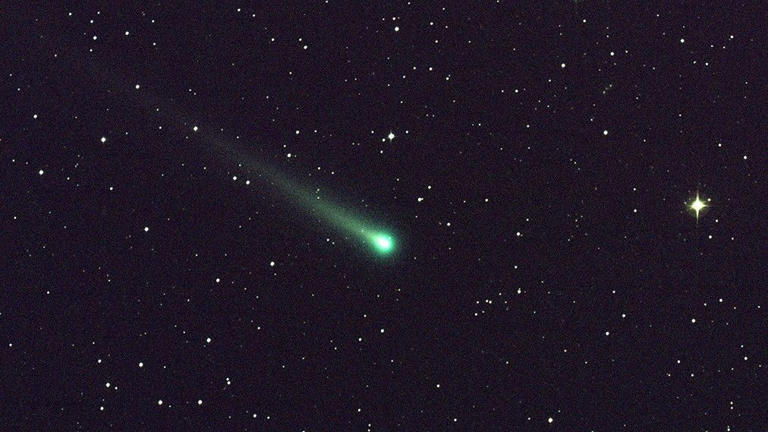
An exoplanet the size of Earth has been discovered by a NASA probe circling a dwarf star some 100 light-years away.
The planet TOI 700 e is 95% the size of our planet and is most likely rocky. The object orbiting the tiny, chilly M dwarf star TOI 700 is the fourth planet to be discovered. The NASA Transiting Exoplanet Survey Satellite, or TESS mission, discovered every exoplanet.
The size of Earth is shared by another planet in the system, TOI 700 d, which was found in 2020. These two exoplanets are both in the habitable zone of their star, or at a distance from the star from which liquid water might be present on their surfaces. The presence of liquid water suggests that the planets may be, or may have been in the past, suitable for life.
A paper on the exoplanet has been accepted for publication by The Astrophysical Journal Letters. The finding of the fourth planet was revealed on Tuesday at the 241st meeting of the American Astronomical Society in Seattle.
“As a result, the TOI 700 system presents a promising opportunity for further investigation. The system also demonstrates how additional TESS observations help us discover ever-smaller worlds because planet e is around 10% smaller than planet d. The universe is full with tiny, cool M dwarf stars like TOI 700, and in recent years, several of them have been discovered to contain exoplanets.
Read more: http://redglitters.com/almost-90-in-the-province-of-china-received-covid/
https://redglitters.com/web-stories/a-hospital-now-received-a-lung-transplant-via-drone/

The object that is closest to the star is TOI 700 b, which is 90% the size of Earth and makes one quick circle of the star every 10 days. The next object is TOI 700 c, which is 2.5 times as massive as our planet and completes one orbit of the star every 16 days. Similar to how the same side of the moon constantly faces Earth, these planets are likely tidally locked, which means they always present the same side to the star.
Planets d and e, the two exoplanets in the star’s habitable zone, have longer orbits, measuring 37 days and 28 days, respectively, because they are a little further away. Actually, planets c and d are where the recently discovered planet e is situated. The 2018-launched TESS mission scans wide areas of the night sky for 27 days at a stretch, focusing on the brightest stars and charting their brightness variations. In 2018, the project started tracking the southern sky, then switched to the northern sky. The fourth planet in the TOI 700 system was discovered in 2020 when the expedition once more turned its attention to the southern sky for fresh studies.
Ben Hord, a graduate researcher at NASA’s Goddard Space Flight Center in Greenbelt, Maryland, and a doctoral student at the University of Maryland, College Park, said in a statement that if the star or planet were a little bit closer or larger, they might have been able to detect TOI 700 e in the first year of TESS data. However, the signal was so weak that we required an extra year of transit observations to locate it.











